Where the wind comes sweeping down the plains
During this visit, there is large hail, 50 mile per hour winds, and rotating thunderstorms. For many local news stations, this would warrant wall-to-wall coverage of radar shots and dire prognostications. Here it’s a mention during commercial breaks with “no interruption to our scheduled programming” It’s a place where afternoon drives are met with increasingly ominous skies. A place where commercials for storm shelters are as common as car commercials. A place where even a budget campground has an underground bunker. Is this the twilight zone. No, it’s in the middle of Tornado Alley.

Tornado Alley is a loosely defined area that extends through Texas, Oklahoma, Kansas, and Nebraska. Though Florida has the highest number of tornados they generally don’t reach the magnitude and size that they do in these plain states.
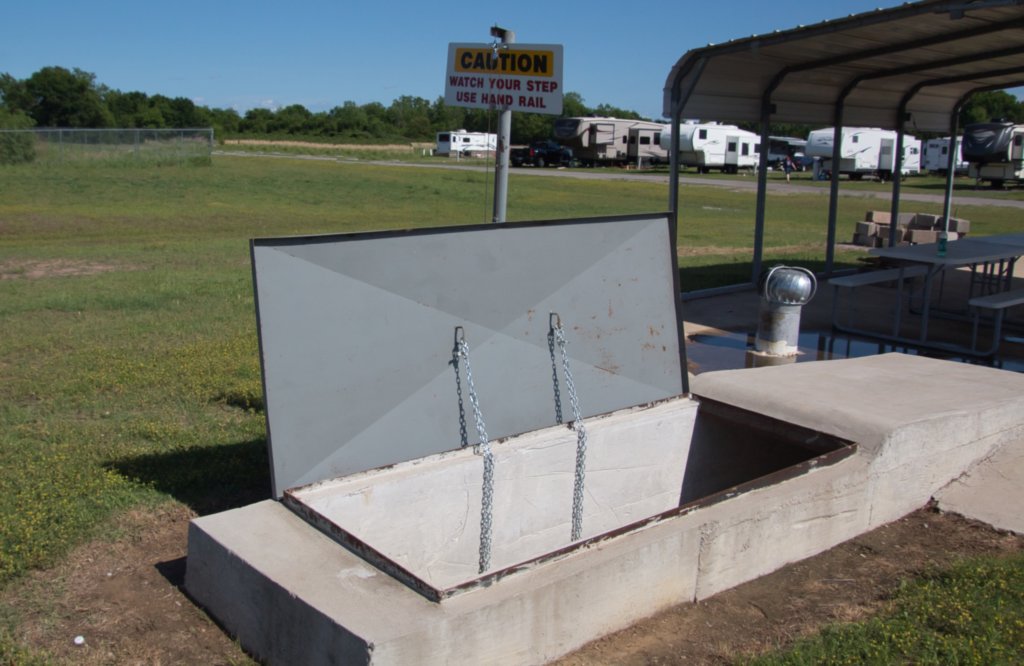
One town in Tornado Alley has seen its inordinate share of severe Tornados (with 10 major tornados in 20 years) Moore, Ok. In 1999, an F5 scale tornado hit the town of just over 50,000 people. This storm recorded wind speeds of over 301 miles per hour. The highest winds ever recorded on earth. It killed 36 people, the highest ever at the time. To help prevent such catastrophes in the future, government officials decide to place many meteorological resources under one roof. Given its central location to Tornado Ally, no wonder Norman, OK becomes home to the National Weather Center.
National Weather Center
Located on the campus of Oklahoma University, the center houses: NOAA Storms Laboratory, National Weather Service Forecast Office, Storm Prediction Center and Radar operations just to name a few. Also in conjunction with Oklahoma University, the largest school of meteorology.
Daily tours of the center are available and they request a 2-week advance notice. Surprisingly to me, about 25 others are on today’s tour. A young lady meets us in the visitor center to be our tour guide. She is an undergrad student at the meteorology school here. I suspect leading us around is some sort of meteorological hazing ritual. Though actually, she was very enthusiastic about the assignment. After a short introductory video, we begin touring the facility.
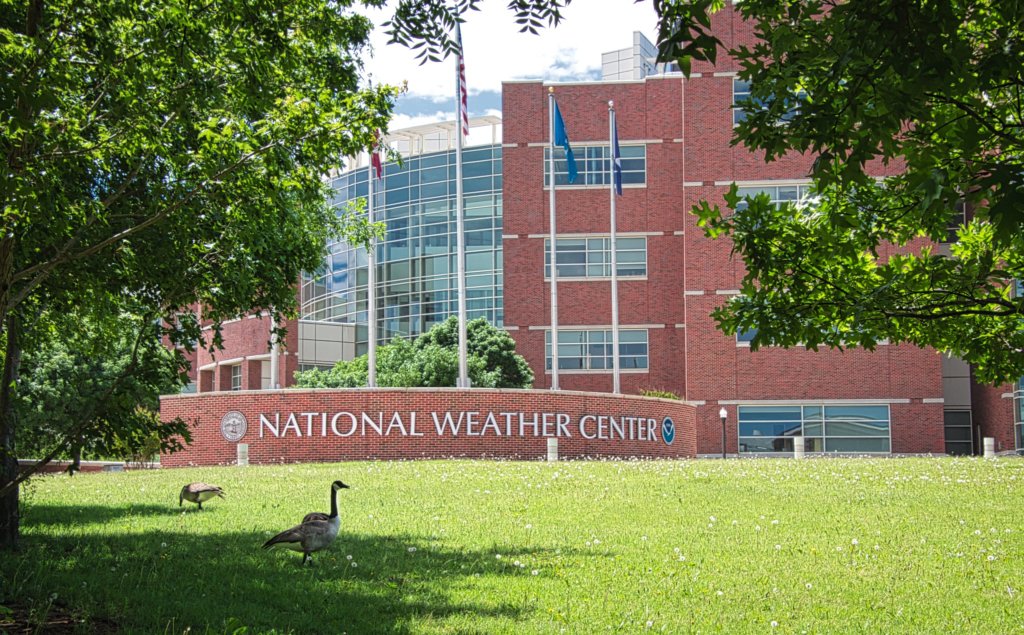
My eyes immediately fixate on the suspended 6′ foot sphere outside the visitors center. The “Science on a Sphere” provides a 3D view of various animated global weather-related data projected on to it. For me, trying to figure out the technology behind this marvel is the highlight of the tour.
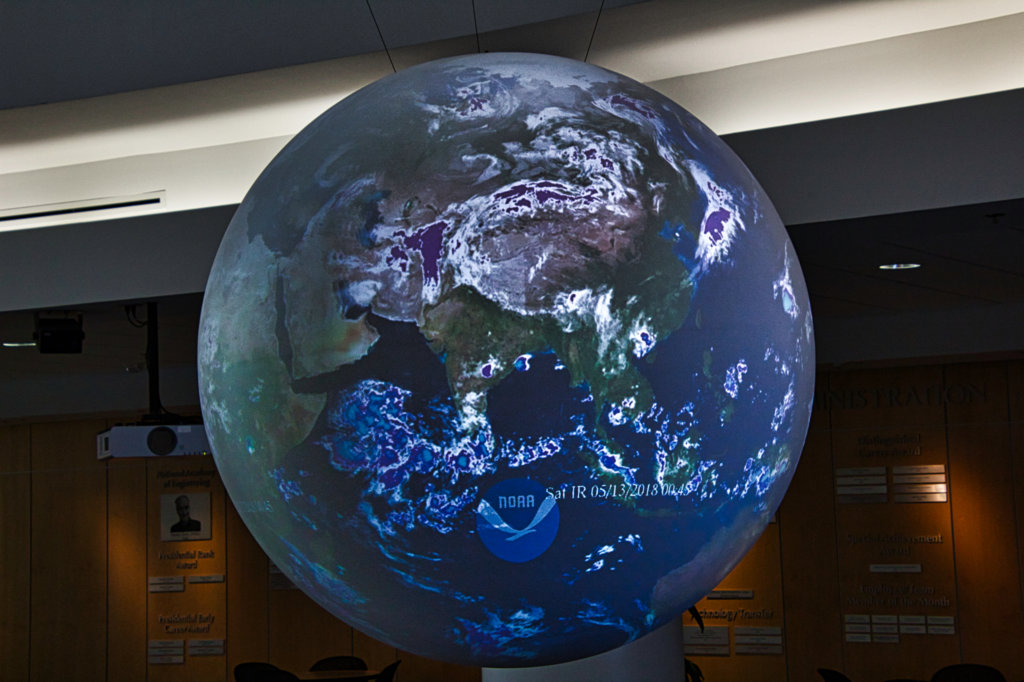
The movie Twister is spoken of with reverence here, and our guide is almost giddy when she introduces us to some of its cast members Dorothy, Dot, and Toto. They apparently stared in the moving and are TOtable Tornado Observatories. At 300-400lbs each they are to be placed in the path of tornadoes to record wind speed, temps, pressure difference. Though in practice they don’t prove to be very practical and see limited use.
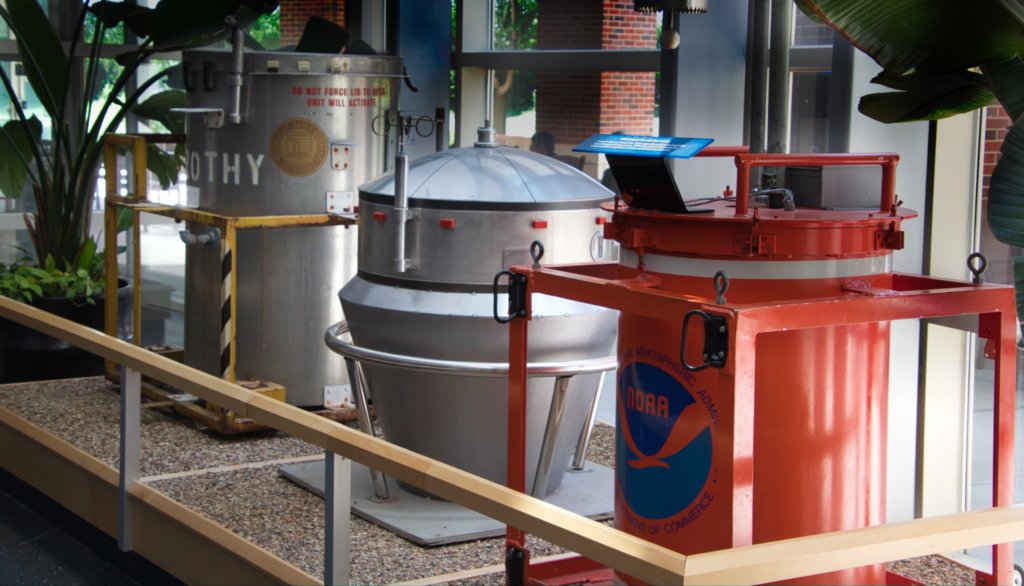
America’s Weatherman
No, not Al Roker. Our guide is quick to point out that he is not a meteorologist but merely plays one on TV. For all that the center does, it amazes me how few people seem to be in the 250,000 square feet of office space. Students make up about 300 of the 500 people here. The rest being research scientists, operational meteorologists, climatologists, support staff and This Guy.
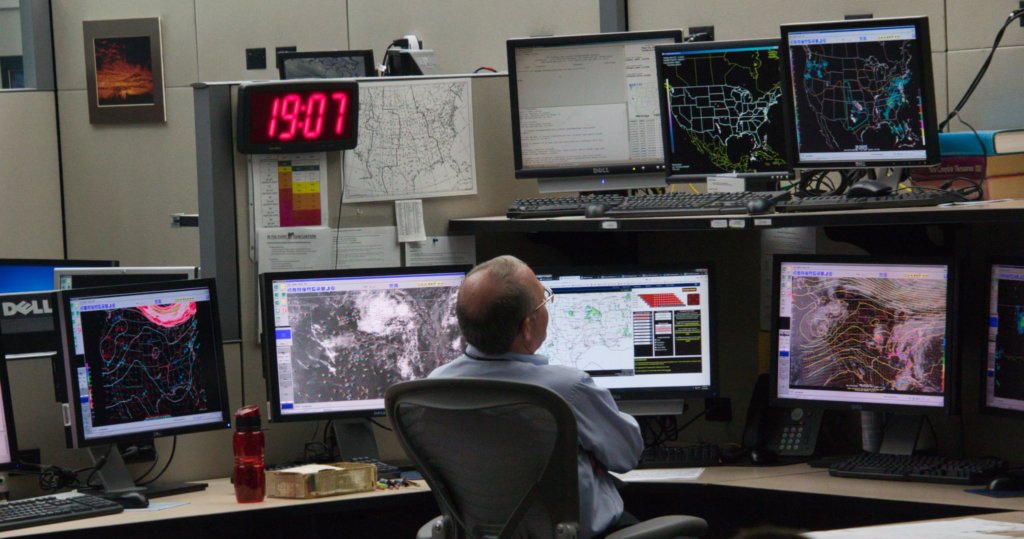
Whenever storm watches or warnings are issued, they originate at the National Weather Service. Governmental warnings are to come from nowhere else. In a top-secret location of the National Weather Center (2nd Floor) is the Storm Prediction Center. Their role is to issue watches and warnings for severe thunderstorms and tornadoes as well as winter and fire advisories. This Guy, along with a small staff of 5, man the center 24×7 365 days a year monitoring metrological anomalies and threats and issue the applicable watches and warnings.
The center tour is more of a “where” and “why” and not so much a “how”. It’s a 90-minute tour of an office building with people monitoring screens and weather patterns and compiling data. With narration on the individual departments’ role in weather prediction, research, and reporting. The tour provides little discussion of how radars work, the predictive analysis used or anything of the such. However, it is pretty cool to know the inner workings of our countries monitoring, prediction, and warning of abnormal weather.


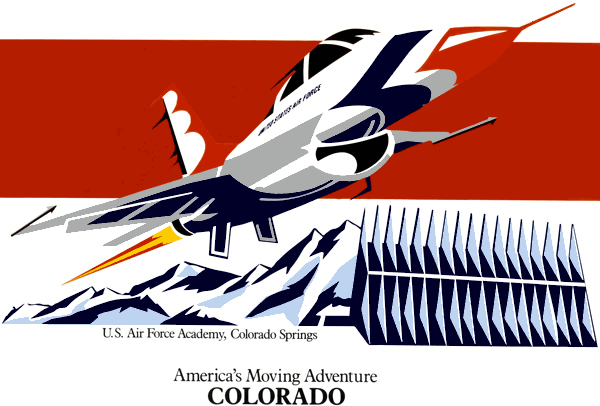

2 thoughts on “National Weather Center- Norman, OK –”